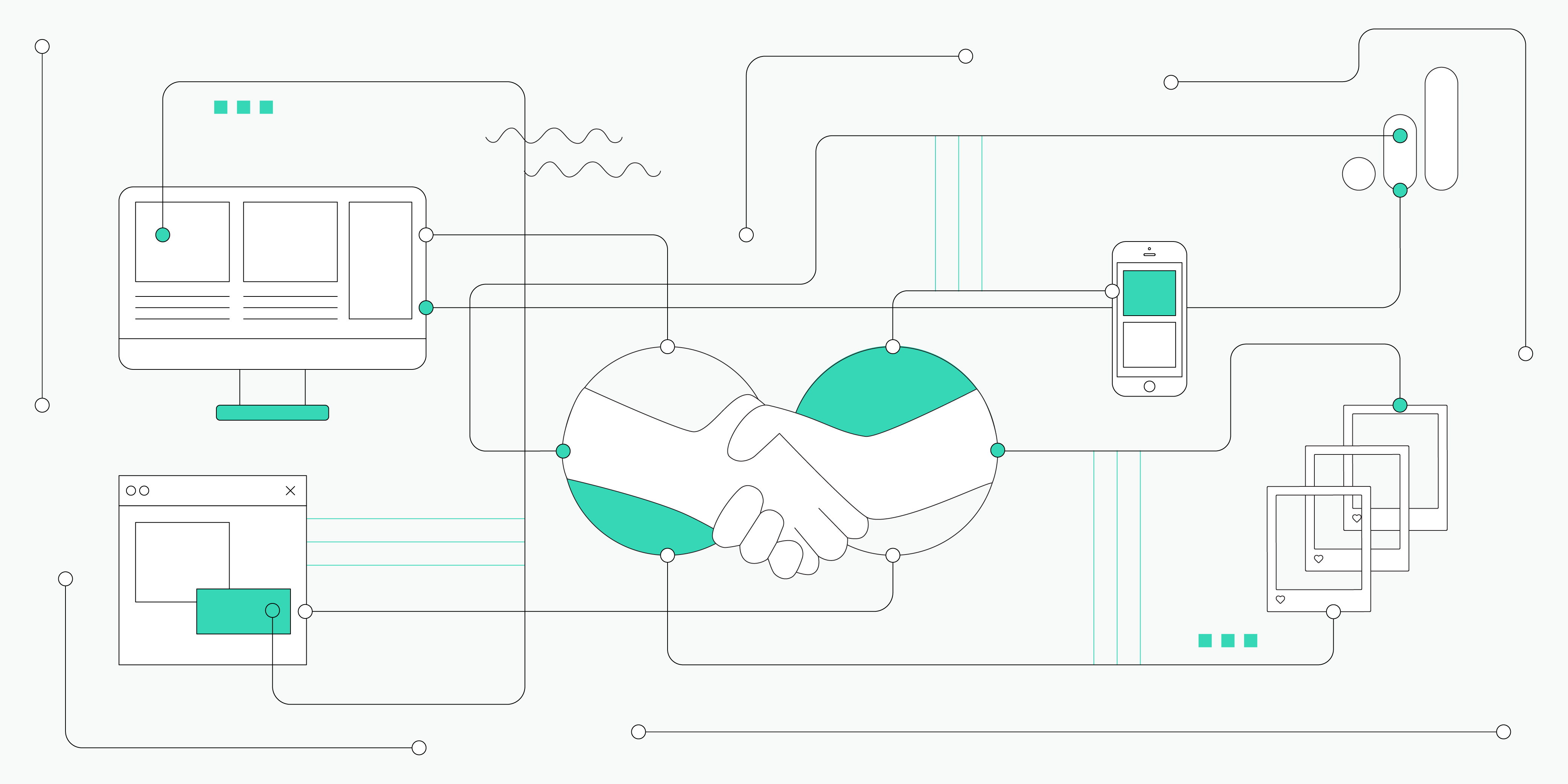The labor market turned a corner when no one was looking. It’s now largely, if not completely, candidate-driven. That means HR departments and contract agencies alike are scrambling to find the best ways to attract candidates for their openings. This situation is leading to a set of problems recruiters have never had to deal with in modern memory:
• Lack of quality candidates
• Low engagement
• Losing great candidates to the competition
• Putting together a strong enough offer to entice the candidate to move
HR has never been shy about embracing technology and never before has that been as evident, or as necessary, as today. The solution to many of these issues can be found in the strategic deployment of technology that fits your situation.
Recruitment (Marketing) Technologies Spread the Word—Automatically
Job Advertising
One of the best ways to use automation in recruitment is with programmatic job advertising, i.e. leveraging technology to place automatically place your ads rather than placing them by hand. This can help you target the ideal candidates all over the internet while saving you money on ads with low (or no) click rates. Automated budget management makes this possible, helping recruiters reduce cost-per-applicant by over 30%.
Below, you'll find a profile for what programmatic job advertising can look like. As you can see, potential candidates are hyper targeted based on where they spend their time online.
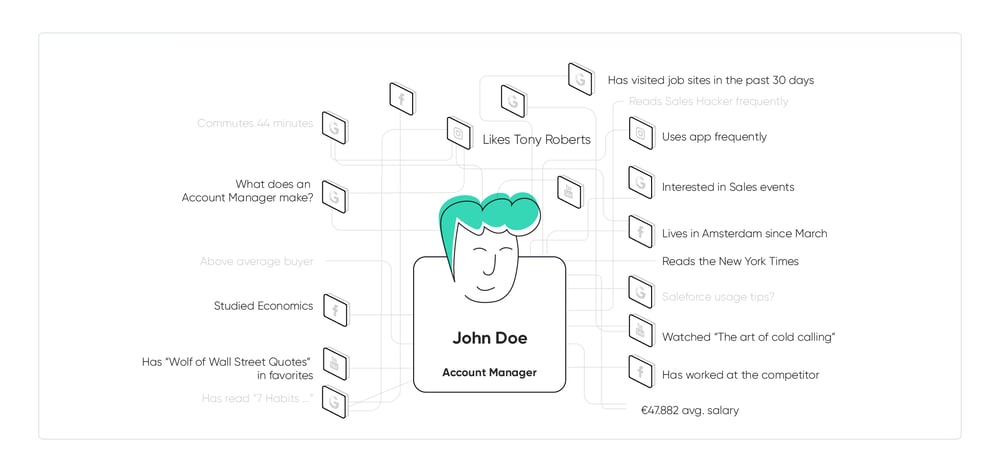
Social Media
Fun fact: 79% of job seekers say they are likely to use social media in their job search (Glassdoor 2013)
Thus, it should be no surprise that social media is proving invaluable to RM campaigns around the world. With the right presence, recruiters are cultivating talent pools full of awesome candidates just waiting for a chance to jump ship and come on board with the right company. By automating your social media posts with the right RMA solution, you not only ensure your followers get your great new content on a regular basis you also free up your team to focus their energy on the human-centric aspects of their jobs, the things they got into recruiting to do in the first place:
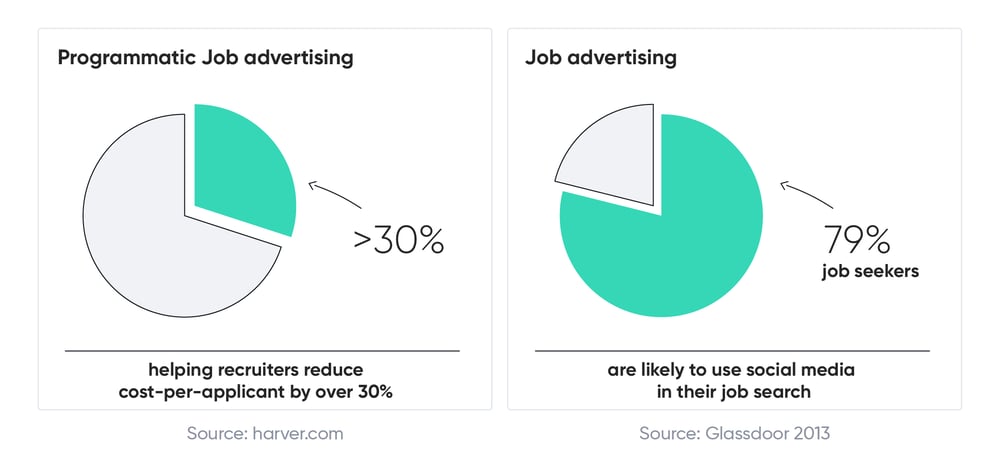
• Coaching candidates for interviews
• Conducting screenings
• Reaching out to hiring managers to discuss upcoming openings
Beyond social, CRM tools can be used to track the entire candidate journey, recording and analyzing every touchpoint for the areas that work and those that could use some tweaking. And the right ATS can capture and track the application stages of that journey, including notes from interviews, links to profiles in other integrated systems, and more.
Communication Has Evolved into RM's Secret Weapon
On average, each corporate job offer attracts 250 resumes. Of those candidates, 4 to 6 will get called for an interview, and only one will get the job. This means a ton of emails (or texts, or InMail messages) need to go out every time you post a new open position. Historically, it's often felt like there weren't enough hours in the day to communicate effectively with hundreds of applicants, but "ghosting" on the candidates who aren't being offered the job in question just makes it harder to maintain a talent pool. Something's gotta give.
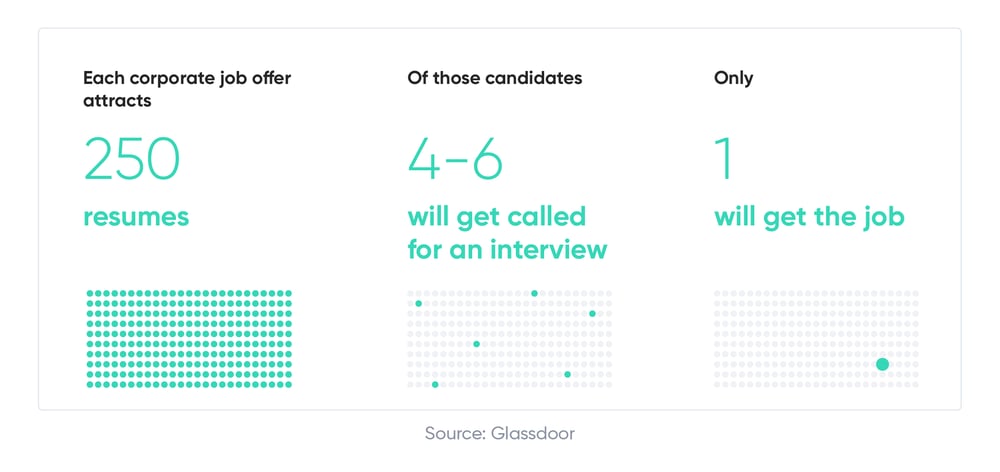
Once the most time-consuming aspect of recruiting, communicating with candidates no longer has to be the time-sink of the past. Once again, automation is key. By taking things like thank-you, follow-up, and reminder emails off your plate, automation frees you up for more creative endeavors. And integrations between your CRM, ATS, and RMA tools (more on that below) mean your automatic emails can still have the personal touch candidates crave, that touch that will keep them in the pool, just waiting for that perfect opportunity. Perhaps this is why using a CRM can reduce cost-per-hire by up to 38% (according to Beamery).
Further, using a candidate’s preferred communication channel (SMS, Facebook Messenger, Twitter DM, etc) shows that you get them, care about their preferences, and value their time while providing another process that can be automated.
Video conferencing technology has truly exploded in recent years. And as they allow for a high volume of sessions to take place, while not eating away the workday, video interviews can be a serious win for RM. The fact that you can conduct multiple screenings without getting up from your desk saves you time and energy and allows you to continue giving each candidate that personalized attention we keep talking about. Not to mention being able to screen someone on another continent as though they were in the room with you.
Integrations Lie at the Heart of a Solid RM Strategy
Of course, technology can present some potential hurdles for recruiters if it's not deployed carefully. Specifically, technology in this area ought to be adopted with an eye towards integration. Why? Because your typically HR software ecosystem has a lot of moving parts:
• CMS: to keep track of candidate info
• ATS: to simultaneously track their journey through the funnel
• RMA: to engage with those candidates online
These involved separate functions that are inherently related, which is why it's important to have systems that play nicely together. To wit, a well-integrated system can help with a number of things:
• Eliminating the ATS black hole, in which candidates apply and never hear from you again
• Offering searchable records on the entire candidate's journey that can be accessed from anywhere in the organization
• Automated flow of data between ATS and RMA (to streamline tracking of open jobs for advertising, etc.)
• Deeper data analysis to provide insights into the candidate’s journey and help ensure you’re providing a smooth and continuous flow for future candidates.
Taken as a whole, these benefits can add up to smarter, more data-driven recruitment, to say nothing of time saved.
Mobile Helps Reach Candidates Where They Are
With estimates saying that by 2025, 75% of the workforce will be Millennials and Gen Z, it’s key to be able to reach these folks where they are, and where they are is on their phone. This not only means having a strong social media presence as discussed above, but also a mobile-friendly or mobile-first design for your entire application process so the candidate can complete their app on the bus while getting coffee, or while walking the dog.
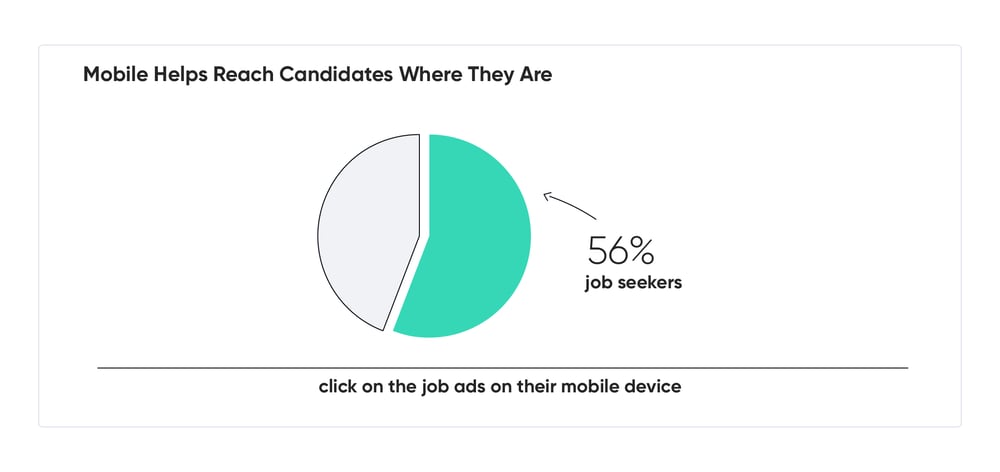
In fact, a lot of job seekers already click on the job ads on their mobile device (56%), and almost half of the candidates ultimately apply via mobile. This means that in addition to making the application itself mobile-friendly, you might benefit by making sure that users on their phones can easily access more information about your company as needed. By developing a strong mobile component for your RM strategy, you’re continuing to make it clear that you put your candidate’s experience first. That their time and energy matter to you, and that you’re doing everything you can to make that experience a great one.
What to Do with all the Data? Analyze and Iterate
Business is becoming more and more data-dependent, and the further we get into the 21st century the truer this becomes. Recruitment is no exception. Each of the solutions discussed here will be generating HUGE amounts of data, and it's what you do with that data that matters. Ideally, you'll be able to:
• Collect and centralize data from different recruitment marketing channels
• Visualize data in easy-to-read graphs and other visualizations
• Gain AI-driven insights into future campaigns
• Analyze candidate behavior on a page level.
Each of the elements above will give you the ability to improve your processes over time. You can use what you learn to make improvements so that your results continue to get better and better moving forward. All of that allows for a clean iterative process and the exponential improvements that come along with it.
.





